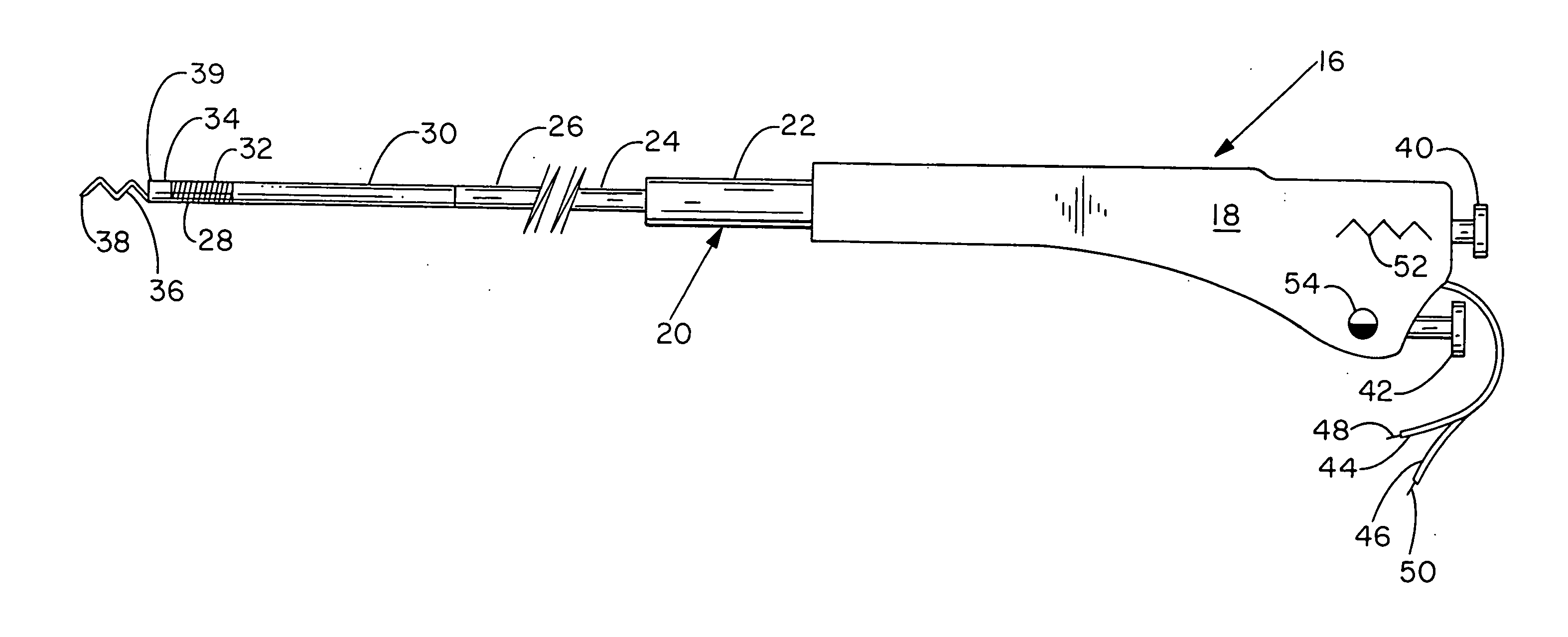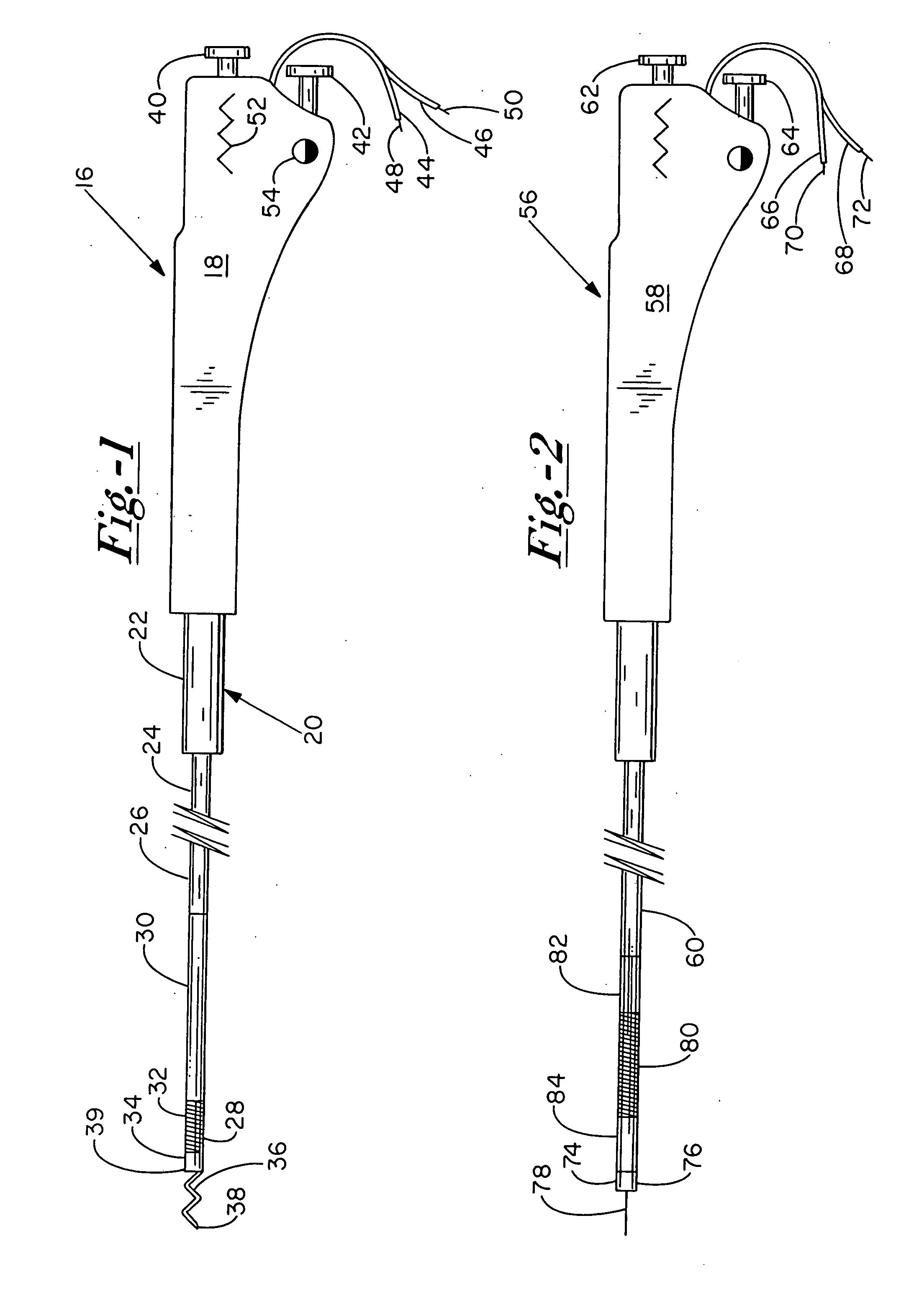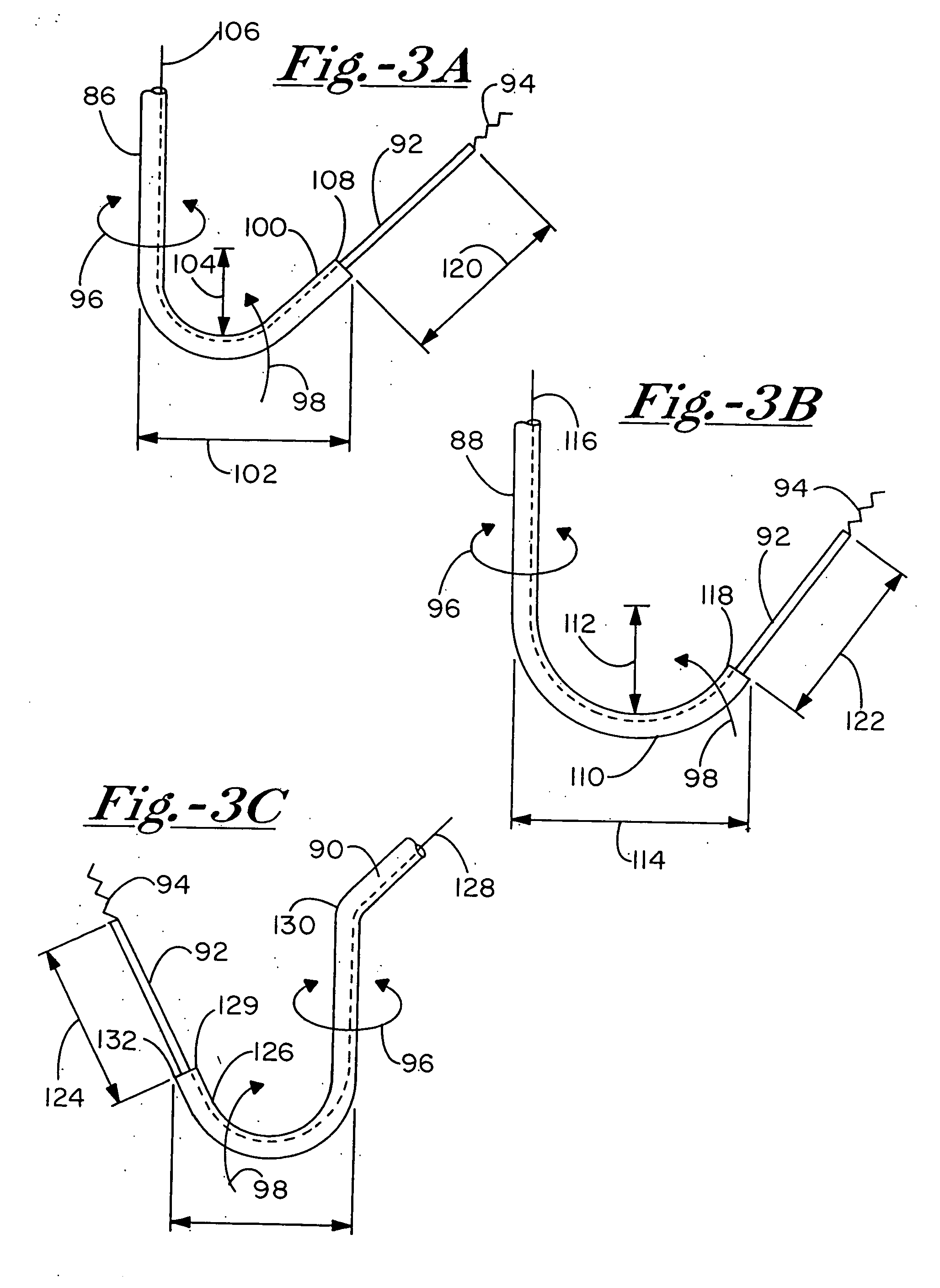Bio-interventional therapeutic treatments for cardiovascular diseases
a bio-interventional and cardiovascular technology, applied in the field of local bio-interventional therapeutic treatment of cardiovascular diseases, can solve the problems of insufficient oxygen to the heart muscle, myocardial ischemia, heart attack or death,
- Summary
- Abstract
- Description
- Claims
- Application Information
AI Technical Summary
Benefits of technology
Problems solved by technology
Method used
Image
Examples
example 1
Treatment of Ischemia in Coronary Artery Disease
[0099] There are two preferred embodiments of this therapy. The first is to provide an angiogenic cytokine in a controlled release matrix that can be delivered with a transendocardial catheter system. As controlled release matrices such as those described in Table 3 have potential for life threatening embolic events—particularly for catheters placed within the left ventricle of the heart—the need for a stable helical needle system becomes apparent. Preferred controlled release strategies include the delivery of microspheres sized between 15 and 200 um, the delivery of fluidic gels that set up within the ventricle by either a chemical interaction or temperature change, or the delivery of helical controlled release depots that remain within the heart as described in U.S. Pat. 6,478,776, which patent is incorporated herein by reference. For the first two controlled release strategies, one or more angiogenic cytokines would be placed in t...
example 2
Heart Failure-Global Delivery
[0102] Heart failure treatment is fundamentally different from therapy for ischemia, and requires broader treatment. The preferred embodiments involve the broad delivery of controlled release formulations of proteins known to be involved in heart failure signaling. Two such agents are BNP (B-type natriuretic peptide) which is released endogenously from the myocytes in heart failure, and apelin which reduces blood pressure via a nitric oxide dependent mechanism. Apelin also is a potent stimulator of cardiac contractility. In the delivery strategy, controlled release BNP (nesiritide), available from Scios Inc. of Freemont, Calif. under the brand name Natrecor, apelin, or both can be delivered to sites within the heart broadly following a grid pattern such that the catheter is positioned and moved through a preset series of steps to target an entire region. For example, if the initial site is in the apex and the catheter is to deliver to all regions within...
example 3
Focal Deliveries
[0103] Focal deliveries for restenosis / stenosis, nodal Arrhythmias, ischemia induced mitral regurgitation, vulnerable plaque and the like, require one to three deliveries close to one another of the preferred therapeutic strategy at the target area. For restenosis / stenosis, vulnerable plaque, and the like, the target is a large epicardial vessel. To deliver to this vessel target, delivery should be performed distal (apical) to the target and in line with the target such that the putative therapeutics from table 2 as well as others not specified here may migrate towards the epicardium and up to the vessel wall periadventicially. It is not well recognized that the lymphatic vessels in the human heart migrate along and around the coronary arteries and that periadventicial delivery may be enabled to a target zone through intramyoicardial delivery distal to the target zone.
PUM
 Login to View More
Login to View More Abstract
Description
Claims
Application Information
 Login to View More
Login to View More - R&D
- Intellectual Property
- Life Sciences
- Materials
- Tech Scout
- Unparalleled Data Quality
- Higher Quality Content
- 60% Fewer Hallucinations
Browse by: Latest US Patents, China's latest patents, Technical Efficacy Thesaurus, Application Domain, Technology Topic, Popular Technical Reports.
© 2025 PatSnap. All rights reserved.Legal|Privacy policy|Modern Slavery Act Transparency Statement|Sitemap|About US| Contact US: help@patsnap.com



